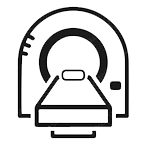EP study
A test of the heart’s electrical system that controls the timing of heratbeats to help doctors understand the nature of abnormal heart rhythms.
Q & A
A look at electrophysiologic study
An electrophysiology study, often known as an EP Study, involves stimulating the heart with tiny electrical impulses and documenting the heart’s electrical activity. Doctors can evaluate significant arrhythmias by stimulating the heart with tiny electrical impulses during an electrophysiologic study, making it the most accurate and dependable means of monitoring cardiac rhythms.
Patients are taken to an electrophysiology lab where they undergo catheterization with the insertion of thin tubes into the heart through the femoral veins. The catheters are equipped with electrodes at the tip, just like a pacemaker, so that tiny impulses can be supplied inside the heart to mimic arrhythmia. Treatment options, such as catheter ablation, medication, surgery, and/or implantation of a pacemaker or implanted cardioverter defibrillator (ICD), may be suggested by your doctor after reviewing the results.
During the EP study
A small, flexible wire is inserted into a vein in the upper thigh or, in rare cases, the side of the neck and guided to the heart during an EPS. The electrical signals from the heart are picked up by these wires. With the use of the wire, your doctor can send very small electrical impulses to your heart, reprogramming its rhythm. An irregular heartbeat could result from these extra stimulations. In many cases, the irregular heartbeat could be stopped by using another different set of electrical impulses. Electrical shocks to the chest are sometimes used to instantly convert an abnormal cardiac rhythm back to a normal if symptoms of fainting occurs. During an EPS, your doctor may also do a catheter ablation, a treatment used to treat some forms of arrhythmia.
What to expect
Outpatient operations typically take between two and six hours. In the first twenty-four hours following surgery, patients should rest as much as possible. Some bruising at the insertion site is also common.










